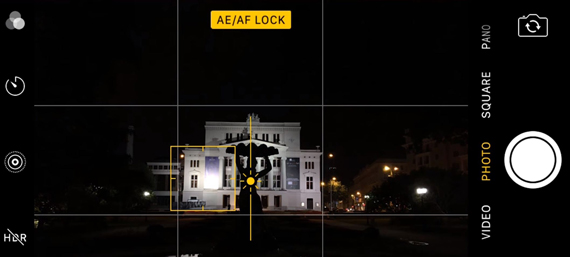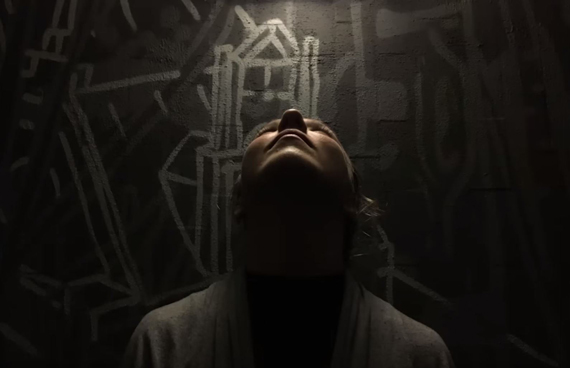With our deal on iPhone Photo Academy ending soon here are some more iPhone photo tricks. Instructor Emil Pakarklis created this video to show the lesser known tactics he uses to capture beautiful images at night on his iPhone. Nighttime photos can be difficult to achieve the proper lighting because an iPhone’s sensor is much smaller than that of a DSLR camera. So, less ambient light reaches the sensor and your pictures often turn out grainy with “noise.” This creates visible patches of fuzziness that can appear gray or orange.
Look to find illuminated areas throughout your night travel. If you have a subject that is placed in front of a more lit background, try setting the focus on the backdrop. This should create a silhouette of your subject and can be used creatively to capture a scene.
To lower the exposure for a night photo, press on the screen to set the focus. A yellow sun icon appears to the right of the focus box. You can adjust the exposure by sliding the sun up or down. By lowering the exposure, you eliminate grainy darkness and make it black as it looks to the naked eye. This draws attention to the lit areas of your frame that are in focus.
Set your focus on the highlights in a dark scene and then adjust the exposure to make the sky remain black. Be careful to not lower it too much since you will lose important detail. After practicing different angles and locations, you will start to notice how much exposure is just right for the situation!
Finding nice light sources at night can determine where you stop for a portrait shot. An overhead light creates dramatic lighting that can be influenced by having your subject move their head or body at different angles. Lowering the exposure lessens the ISO value so that photos appear less grainy. You also get a quicker shutter speed!
When you use flash photography on your iPhone at night, make sure that you are only a few feet away from your subject(s). Direct flash on their face will blow out the details and leave highlighted areas. One way to avoid this is with external equipment, such as a small flashlight. Changing the angle that the light hits your subject affects the shadows and can be used to your advantage. Get out there and give it a try tonight! If you are interested in learning more about iPhone photography, you can visit Emil’s iPhone Photography School, we were able to negotiate an 85% discount for our readers which ends soon.
“The other thing that’s counterintuitive about night photography is that in order to take a better, higher quality photo, what you really want to do is dial down the exposure.”
Like This Article?
Don't Miss The Next One!
Join over 100,000 photographers of all experience levels who receive our free photography tips and articles to stay current:








This is amazing, I just feel about the iPhone X has dual 12-megapixel cameras and some other amazing breakdowns. Truth be told, how far the iPhone has evolved through the journey from June 29, 2007!
I use a tripod and Proseezion and I get stunning results every time.
Thanks for the tips. A phone camera is a good tool but it’ll never beat out a DSLR or any other professional camera.